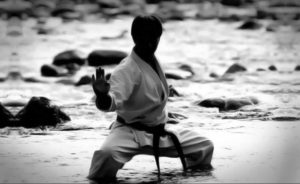30 Day Challenge/Day 26: Forms/Sets
One aspect of the Martial Arts that often in misunderstood and in fact criticized, is what we call Forms and/or Sets. Japanese styles call them Kata, Korean styles call them Hyung and Chinese styles call them Taolu. Translation for many of these terms refers back to form- Again Form means the shape of and the bringing together of parts to or combine to create.
In Forms, we are combining self defense ACTIONs in a predetermined combination to express Principles of Motion. In Sets, we are combining basics in a predetermined combination to focus on their executions. (Please note: these definitions are minimal and simplified for the content of this article.)
Because they are not expressly interacting with actual attackers, training and performing Forms/Sets is often dismissed by some as simple dance like routines. Which they normally are in practice. However in overall development of skills and knowledge the parts that have been brought together can be analyzed then with proper definitions applied to self-defense situations.
Training forms allows us the opportunity to focus on controlling ourselves without any outside concerns or distractions. The give us a method for exercising our Fitness Levels and to develop an awareness of Principles of Motion. They are some incredible Home Study and Training courses. They don’t require we be on the mat to get the value from training them.
More importantly they create an opportunity that allows us to focus inwardly although we are attempting to express ourselves outwardly through physical motion and body language. As we seek to understand our motions and what we are feeling deeper, we increase our awareness and understanding of “self.” Each repetition or exercise of the form offers us an opportunity to connect with the deepest parts of ourselves. Another chance to grow and improve that is understandably unique. This can be achieved through other activities such as dance, gymnastics, sports, music, etc. However, the intent behind the Martial Arts is about “self” and more importantly the “defense of self” in the ways that the other activities don’t bring to the forefront.


